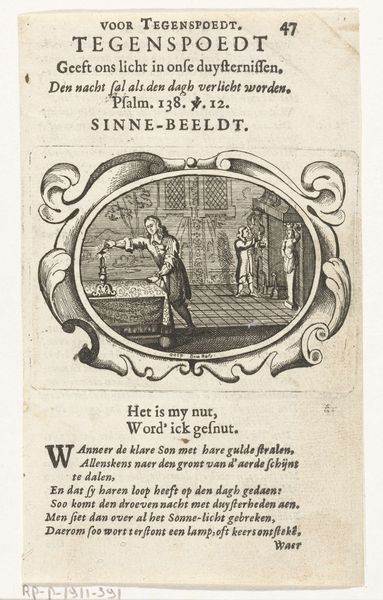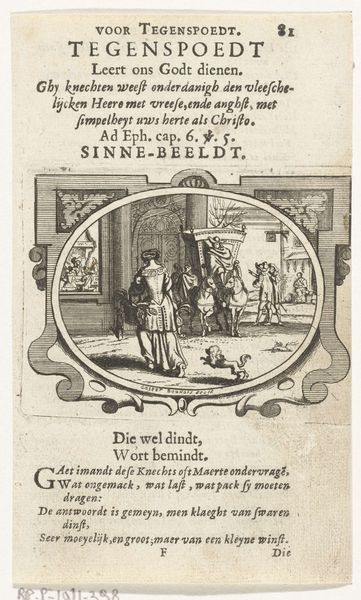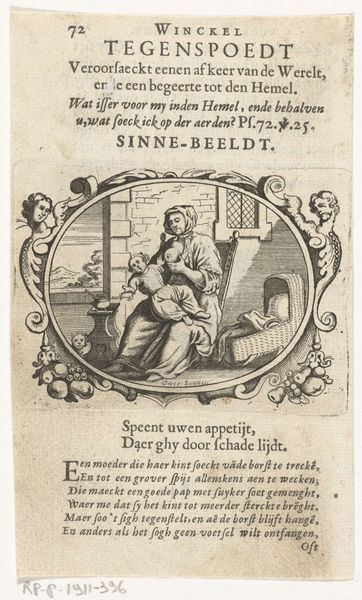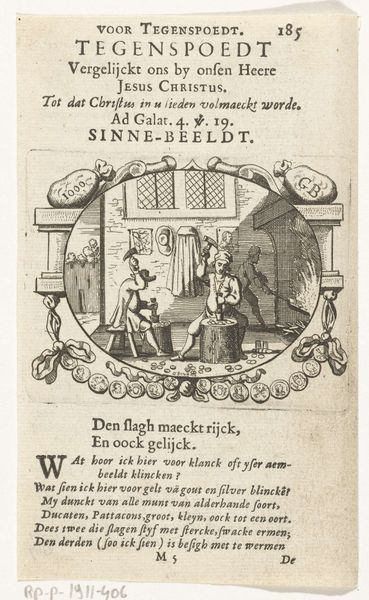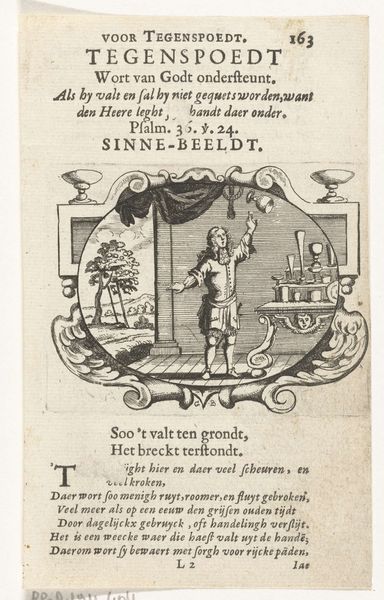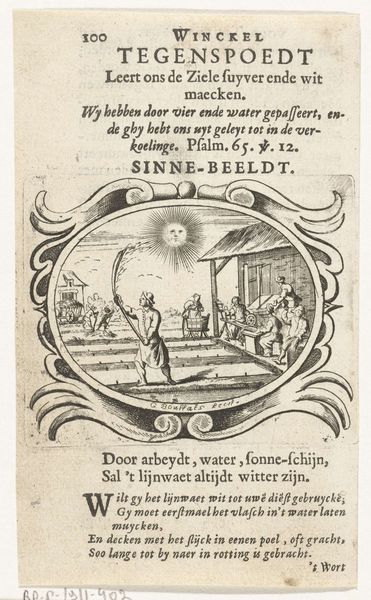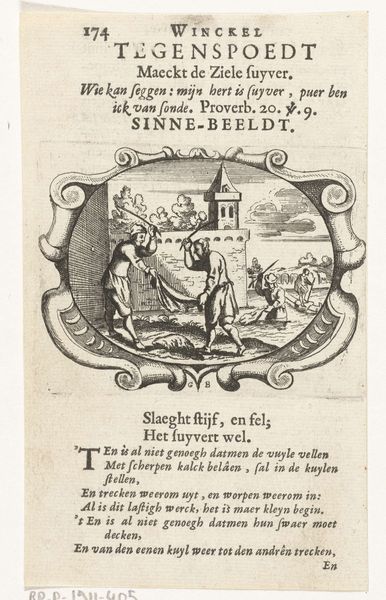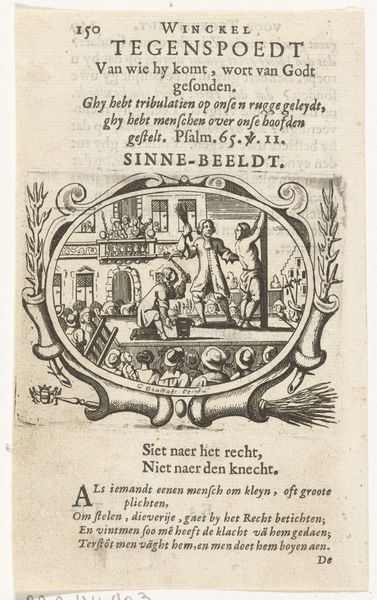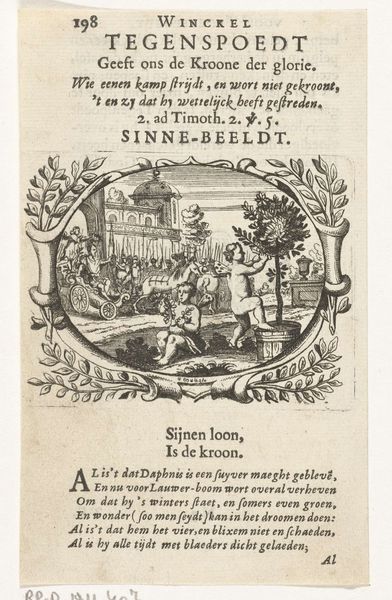
print, engraving
#
allegory
#
baroque
# print
#
pen illustration
#
old engraving style
#
genre-painting
#
engraving
Dimensions: height 145 mm, width 84 mm, height 63 mm, width 84 mm
Copyright: Rijks Museum: Open Domain
Curator: Today we’re looking at "Tegenspoed verheft de mens," an engraving from 1679 by Gaspar Bouttats, currently held at the Rijksmuseum. Editor: My immediate reaction is that the composition feels meticulously structured, almost like a stage setting. There's a deliberate arrangement of lines and forms, creating a contained, theatrical space. Curator: Indeed. Bouttats was working during the Baroque era. This piece employs allegory to communicate ideas about adversity and resilience, embedded within a worldview dominated by the scripture reference we see just beneath the title: "Lib. I. Reg. cap. 2. 4. 7.". This references The First Book of Kings, a text where an unforgiving god offers hope to those willing to endure their misery, a relevant social perspective to consider at this point in time. Editor: Absolutely. Structurally, notice the oval frame isolating the scene. Within that, we observe the figure bouncing a ball, framed between the solid architectural elements and soft drapery, not to mention the mirror reflecting more architectural grandeur behind. The relationship between hard, geometric lines and more fluid, organic shapes strikes me as key to interpreting the print's success. Curator: Right, because those visual relationships give visual form to this idea of how difficulties or downward motions can lead to an upward movement or transcendence. The writing below furthers this interpretation. The poem translates into something like "this sinking stroke makes you higher," or "if his ball falls hard, it will teach you something in adversity," and highlights social attitudes about overcoming life's miseries in the 17th century. Editor: Considering the medium, engraving, Bouttats demonstrates admirable skill in creating depth and texture. The gradations of light and shadow are subtle, achieving a three-dimensionality within the restrictions of line work. Look at how the reflections in the background draw our eye back to this central, solitary, bouncing figure, in his moment of activity. It is formally impressive. Curator: Yes, and there's something to be said about that mirror behind the figure. The social and political environment demanded an active acknowledgement of hardships as opportunities. So in essence, this engraving encourages a moment of reflection as an embrace of what comes next, solidifying resilience. Editor: Ultimately, beyond its historical context, the work demonstrates how careful construction can convey nuanced themes. It really epitomizes its time in European visual art history, wouldn't you agree? Curator: Agreed. Understanding both the formal aspects and social context allows a more robust experience, adding valuable understanding of Dutch culture.
Comments
No comments
Be the first to comment and join the conversation on the ultimate creative platform.


